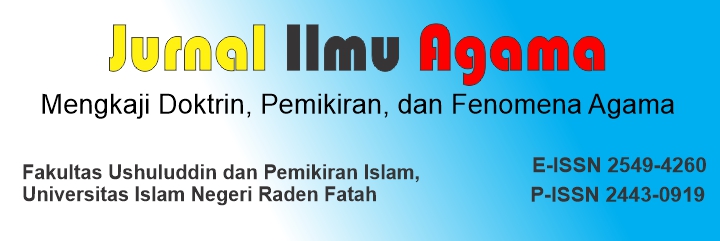Exploring Children’s World through Tafsir: A Critical Examination of Abdul Mustaqim’s Tafsir Juz ‘Amma for Kids
Main Article Content
Abstract
The Qur'an as a guide for Muslims will be easily understood if there is an interpretation. Basically in an interpretation there are several things that must be considered. First is the ease with which the interpretation is understood and second is the effectiveness of the interpretation. This study aims to analyze how effective Tafsir Juz ‘Amma For Kids is on children's understanding of the Qur'an at an early age. This research uses descriptive qualitative methods to explore the events observed and Content Analysis as the data analysis technique. The findings of this study are very important because it highlights the extensive influence on a child's understanding of the Qur'an starting from an early age, and highlights the effectiveness of the materials of this tafsir for the needs of early childhood in learning and understanding God's messages easily. The results of the study not only provide deep insight into the effectiveness of Tafsir Juz ‘Amma For Kids, but also provide an understanding of the similarities in the need for interpretation of the Qur'an, young or old, male or female, adults or children. In the context of the archipelago, especially Indonesia, this article highlights the great and real contribution of a Tafsir Juz ‘Amma For Kids in understanding the message of religion from an early age.
Article Details

This work is licensed under a Creative Commons Attribution 4.0 International License.
Authors who publish with this journal agree to the following terms:
- Authors retain copyright and grant the journal right of first publication with the work simultaneously licensed under a Creative Commons Attribution 4.0 International License that allows others to share the work with an acknowledgement of the work's authorship and initial publication in this journal.
- Authors are able to enter into separate, additional contractual arrangements for the non-exclusive distribution of the journal's published version of the work (e.g., post it to an institutional repository or publish it in a book), with an acknowledgement of its initial publication in this journal.
- Authors are permitted and encouraged to post their work online (e.g., in institutional repositories or on their website) prior to and during the submission process, as it can lead to productive exchanges, as well as earlier and greater citation of published work.
How to Cite
References
Adib, Shohibul. “Metode Tafsir Al-Qur’an untuk Anak Didik: Studi Buku Tafsir Al-Qur’an Karya Afif Muhammad,” t.t.
Chalim, Abdul. “Pola Komunikasi Kitab Tafsir Juz ‘Amma For Kids Karya Abdul Mustaqim.” Qaf: Jurnal Ilmu Al-Qur’an dan Tafsir 5, no. 1 (5 Maret 2023): 62–77. https://doi.org/10.59579/qaf.v5i1.4376.
Fadli, Muhammad Rijal. “Memahami desain metode penelitian kualitatif”. Humanika, Kajian Ilmiah Mata Kuliah Umum 21, no. 1 (2021).
Fitri, Wildani Aulia dan Muqita Hanifah Hasanah Dilia. “Optimalisasi Teknologi Ai Dalam Meningkatkan Efektivitas Pembelajaran. Sindoro: Cendikia Pendidikan 5, no. 11 (2024), 11–20.
Hakim, Muhammad Naufal. “Maqâshidiyyah Integratif dan Prinsip Metodologi Teori Tafsîr Maqâshidî Abdul Mustaqim”. Islamadina: Jurnal Pemikiran Islam 24, no. 2 (2023).
Illeris, Knud, ed. Contemporary Theories of Learning: Learning Theorists... in Their Own Words. Second edition. London New York, NY: Routledge, Taylor & Francis Group, 2018.
Inhelder, Bärbel, dan Jean Piaget, ed. Piaget and His School: A Reader in Developmental Psychology. Springer Study Edition. New York Heidelberg: Springer, 1976.
Maksum, Muh. “Ilmu Tafsir Dalam Memahami Kandungan Al-Qur’an,” t.t.
Mardiah, Anisatul. et al. “Family: Foundation of Children's Education in the Era of Qur'anic Disruption”, Jurnal Obsesi: Jurnal Pendidikan Anak Usia Dini 7, no. 5 (2023).
Mohd Yunus, Mohd Amin, Aida Mustapha, Rizwan Iqbal, dan Noor Azah Samsudin. “An Ontological Approach towards Dialoguebased Information Visualization System: Quran Corpus for Juz’ Amma.” Disunting oleh M.N. Nik Hisyamudin, K. Amir, I. Al Emran, I. Mohd Rasidi, M.B. Mohd Faizal, Md J. Mohd Azlis Sani, T.A. Ahmad Mubarak, Z. Izzuddin, dan M. Sofian. MATEC Web of Conferences 135 (2017): 00070. https://doi.org/10.1051/matecconf/201713500070.
Muhammad Quraish Shihab, dan Ihsan Ahli Fauzi. Membumikan Al-Qur’an: fungsi dan peran wahyu dalam kehidupan masyarakat. Edisi ke-1. Bandung: Mizan, 2013.
Mustaqim, Abdul. Tafsir Juz 'Amma for Kids. Solo: Tiga Serangkai, 2011.
Mustaqim, Abdul. https://artikula.id/abdul/inovasi-dan-visualisasi-pesan-tuhan-dalam-tafsir-juz-amma-for-kids/ diakses pada 5 Mei 2024.
Nelson, Lee, Ryan Groom, dan Paul Potrac, ed. Learning in Sports Coaching: Theory and Application. London: Routledge, 2016.
Oktaviana, Anisa Rosi. “Konsep Hermeneutika Menurut Mohammed Arkoun” 12, no. 2 (2021).
Salamah, Ika Hilmiatus. Juz 'Amma publications for kids in Indonesia: A study of authorship, presentation, and interpretation approaches. Tesis, Universitas Islam Negeri Maulana Malik Ibrahim 2024.
Susilo, Farid Agus. “Peningkatan Efektivitas Pada Proses Pembelajaran,” MATHEdunesa 2, no. 1 (2013).
Winanti, Rindy. “Efektivitas Komunikasi Verbal Dalam Meningkatkan Kegiatan Menghafal Juz ‘Amma pada Taman Pendidikan Anak Usia Dini di Kecamatan Tanjungpura, Kabupaten Langkat” 4, no. 1 (2024).
Zahro’, Nafiatuz. “TAFSIR VISUAL Kajian Resepsi atas Tafsir dan Ilustrasi dalam Tafsir Juz ‘Amma for Kids.” Jurnal Studi Ilmu-ilmu Al-Qur’an dan Hadis 16, no. 1 (16 Maret 2017): 123. https://doi.org/10.14421/qh.2015.1601-07.
